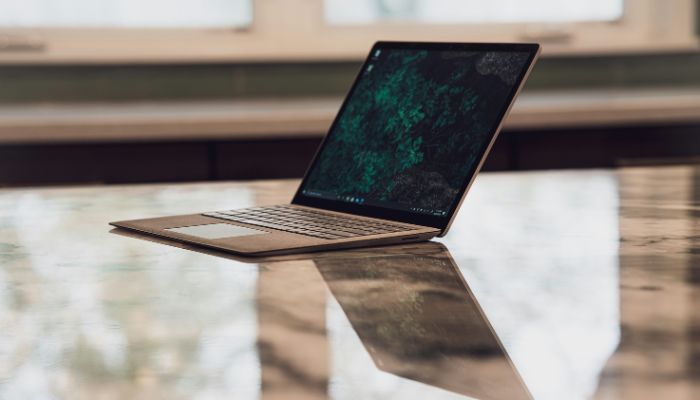
Emails can get leaked through various avenues. Unauthorized access to email servers, commonly known as hacking, remains an ever-present risk. Additionally, vulnerabilities in personal devices or weak account passwords also invite threats. Phishing attacks, where deceptive emails mimic legitimate ones to solicit personal information, are another source of leaks. Infections from different types of malware can put sensitive information at risk, and even insider threats pose significant risks.
Our website, specializing in identity verification and background checks, offers tools that can indirectly assist in understanding how emails get leaked. While we don’t directly deal with email security, our services can be used to investigate the aftermath of a leak, such as verifying the identity of individuals involved or checking the background of suspicious contacts.
Our extensive database and search capabilities, including access to public records and personal information, can provide valuable insights in cases where email security is compromised, helping users to assess potential risks and take informed actions.
Persisting further ‘how do emails get leaked’ will provide deeper insight into the intricacies of these risks, understanding the consequences of email leaks, and discovering effective preventive strategies.
Understanding Email Systems
To comprehend how emails get leaked, it is crucial to first understand the fundamental workings of email systems. At the heart of these systems are email servers, managed by your email provider, which facilitate the delivery of messages from one email address to another.
Your email account is essentially a storage space on the server where your emails reside. When you send an email, it travels from your device, through the server, and then to the recipient’s email server. The recipient’s email account then retrieves the message from their server.
Email leaks can occur at various points in this process. For instance, if an unauthorized individual gains access to the email server, they could potentially access all email accounts hosted on that server. This is why it is imperative for email providers to have robust security measures in place to protect their servers.
Moreover, if your personal device is compromised, an attacker could gain access to your email account, leading to a potential email leak. Therefore, it’s not only the security of the email servers that matters but also the security of the devices used to access the email accounts.
The Role of Phishing Attacks

One significant threat to email security and a common cause of leaks is the phenomenon of phishing attacks. Phishing attacks involve the sending of fraudulent emails designed to look like they are from reputable companies. Their aim is to trick the receiver into revealing personal information such as passwords and credit card numbers.
Phishing emails are often hard to distinguish from genuine communication as they mimic the look and feel of actual emails from the company they are impersonating. This can make it difficult for individuals to identify these suspicious emails, making it easier for attackers to gain access to sensitive information.
Once a user has been tricked into entering their login credentials into the fraudulent site linked in the phishing email, hackers can easily access the user’s account, leading to email hacks. The compromised email account can then be used to send more phishing emails, creating a vicious cycle of security breaches and data leaks.
In order to prevent falling victim to these phishing attacks, it is essential to be vigilant and scrutinize incoming emails for signs of fraud. It’s also crucial to report any suspicious emails to the relevant authorities in order to protect oneself and others from such attacks.
Malware: A Hidden Threat
Beyond the deceptive realm of phishing attacks lies another profound menace to email security: malware, a hidden and often underestimated threat. Malware, or malicious software, is a potent weapon in the hands of cybercriminals, which can cause substantial damage, including email address leaks.
Malware can infiltrate systems through dangerous emails, often disguised as harmless attachments or links. Once the malware has gained access to your system, it can compromise your email security leading to leaks. Antivirus software plays a vital role in protecting your system against such threats, but it isn’t always a foolproof method.
Malware threats to email security can be categorized as follows:
- Spyware: Software that secretly monitors and collects information.
- Ransomware: Malware that locks data and demands a ransom for its release.
- Trojans: Malicious programs that appear benign but perform undesirable actions.
- Viruses: Programs that can self-replicate and infect other programs or files.
- Worms: Software that can spread across networks without any user intervention.
Understanding and staying vigilant against these malware types can significantly enhance your protection against email leaks. Remember, your email security is only as strong as its weakest link.
The Danger of Weak Passwords

While malware poses a significant risk to email security, an equally pervasive threat lies in the use of weak passwords. Weak passwords make online accounts susceptible to unauthorized access. The password strength is often undermined by users’ preference for easy-to-remember combinations, thereby allowing intruders to breach security protocols effortlessly.
The danger of weak passwords is further escalated by the increasing prevalence of brute force attacks. In this scenario, hackers systematically check all possible password combinations until the correct one is found. It’s an alarming situation as weak passwords often take less time to crack, presenting an open door for cybercriminals.
To prevent leaks, it is crucial to prioritize password strength. Strong passwords typically include a mix of alphanumeric characters, symbols, and are of sufficient length. The more complex your password combinations are, the harder it is for hackers to decode, thereby reducing the risk of your emails getting leaked.
Insider Threats to Email Security
Shifting our focus to another significant threat, insider attacks pose a profound risk to email security. These attacks often result from negligence, malicious intent, or simply unawareness about security protocols. Insider threats can lead to severe email data breaches, compromising the corporate network’s integrity and resulting in substantial financial and reputational damage.
This risk can materialize through several scenarios, such as:
- Employees unintentionally sending sensitive information to unintended recipients.
- Malicious insiders deliberately leaking confidential data.
- Insiders falling victim to phishing scams due to lack of understanding about security measures.
- Use of unauthorized devices or software that can breach corporate network security.
- Employees using weak or easily guessable passwords, allowing unauthorized access to email communication.
Outdated Security Measures
In the rapidly evolving digital landscape, reliance on outdated security measures can significantly increase an organization’s vulnerability to email leaks. These outdated security measures, typically a result of complacency or budget constraints, fail to keep up with the sophisticated tactics of cybercriminals.
Security updates, for instance, are a critical aspect of maintaining a robust defense against email leaks. These updates often contain patches for vulnerabilities that could be exploited by hackers. An organization that neglects regular security updates essentially leaves the door ajar for potential breaches.
Moreover, the use of a security consultant can help organizations stay updated on the latest threats and solutions. A consultant can provide guidance on the most effective and up-to-date security measures to ensure the safety of emails.
One common threat is an email from scammers, often containing malicious attachments in emails. Without proper security measures, employees might inadvertently open these attachments, leading to a potential breach. Therefore, regular training on recognizing and handling suspicious emails is essential.
Impact of Large-Scale Data Breaches

Large-scale data breaches can wreak havoc on an organization, exposing sensitive information and undermining trust. In the digital age, where online security is paramount, these breaches can have severe implications, affecting not just organizations but individuals as well. The impact of such breaches is far-reaching, with potential outcomes such as:
- Compromised digital identity, leading to potential identity theft.
- Loss of confidential information, causing severe reputational damage.
- Increased vulnerability to phishing scams and malware attacks.
- Leaked emails or personal data being sold on dark web sites.
- Increased costs for organizations as they scramble to mitigate the damage and secure their systems.
These outcomes highlight the devastating effects of large-scale data breaches. It is therefore crucial for organizations to prioritize online security and mitigate the risk of data breaches. This includes updating security measures, educating employees about safe online practices, and investing in robust security systems. While it is impossible to prevent all breaches, a proactive approach can significantly reduce the potential impact.
In the next section, we will discuss ‘Effective Strategies for Email Protection’, providing practical tips to help individuals and organizations enhance their email security.
Effective Strategies for Email Protection
Navigating the treacherous waters of digital communication necessitates a sound understanding of effective strategies for email protection. Keeping your email address safe is paramount and revolves around several key approaches.
Firstly, maintaining private emails requires the utilization of compliant email services. These platforms uphold stringent security measures and regulations, ensuring the safety of your data from potential breaches.
Secondly, the use of additional email aliases is an effective strategy. This method involves creating alternative addresses that redirect to your primary account, safeguarding your main address from exposure and reducing the risk of falling prey to types of email attacks.
Moreover, educating oneself about these various types of email attacks is crucial to recognizing and avoiding potential threats. Phishing, spoofing, and ransomware attacks are among the common threats that pose significant risks to email security.
Lastly, regular password updates, two-factor authentication, and secure connection use are critical for ensuring that your email remains a private and secure means of communication.
Conclusion
Email leaks can occur due to a variety of causes, including phishing attacks, malware, weak passwords, insider threats, and outdated security measures. These leaks can have devastating impacts, particularly in the case of large-scale data breaches that result in a leaked emails list circulating in unauthorized hands.
However, through the implementation of effective strategies for email protection, such as multi-factor authentication and regular software updates, the security of email systems can be significantly improved.
FAQs: How Do Emails Get Leaked
1. How can I ensure my email address is secure from email leaks?
To secure your email address from potential email leaks, it’s crucial to use strong passwords and enable two-factor authentication. This adds an extra layer of security beyond just the password. Regularly updating your password combinations and avoiding suspicious links in phishing emails are also key steps. Remember, a secure password often includes a mixture of letters (both uppercase and lowercase), numbers, and symbols.
2. What should I do if I receive strange emails or spam messages?
If you encounter strange emails or spam messages, it’s important to exercise common sense. Do not click on any unknown links or download attachments in emails from unverified sources. These could be phishing scams trying to steal your personal details or install malicious software on your mobile device. Always verify the real email address of the sender and report suspicious activity to your email provider.
3. How can I protect my online accounts, especially on public Wi-Fi networks?
When accessing online accounts, especially over public Wi-Fi networks, use a virtual private network (VPN) for enhanced security. This helps shield your online activity from cyber threats. Additionally, ensure that your device protection is up-to-date with the latest antivirus and anti-malware software. For financial accounts or online shopping, always check for secure connections (https) and avoid using non-secure websites.
4. What are the signs of identity theft, and how can I prevent it?
Identity theft can manifest in various ways, such as unusual activity on your bank statements, fraudulent emails, or credit report discrepancies. To prevent it, regularly monitor your financial details and credit card statements. Use services like Norton Identity Advisor or Identity Guard for top-rated credit and identity monitoring. Be cautious of phishing sites and fraudulent websites that mimic legitimate ones, and never share your personal documents or login details online without verifying the site’s authenticity.